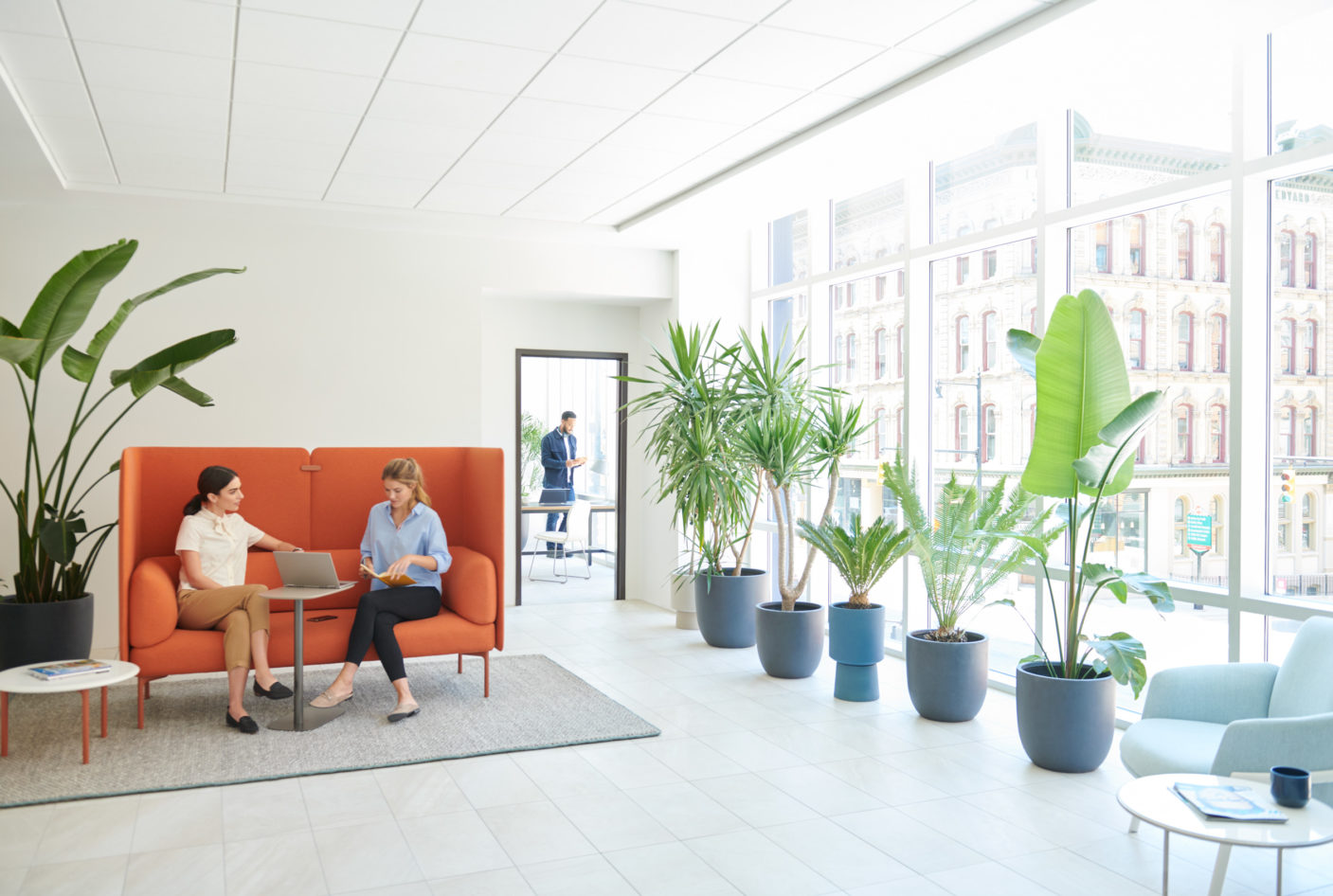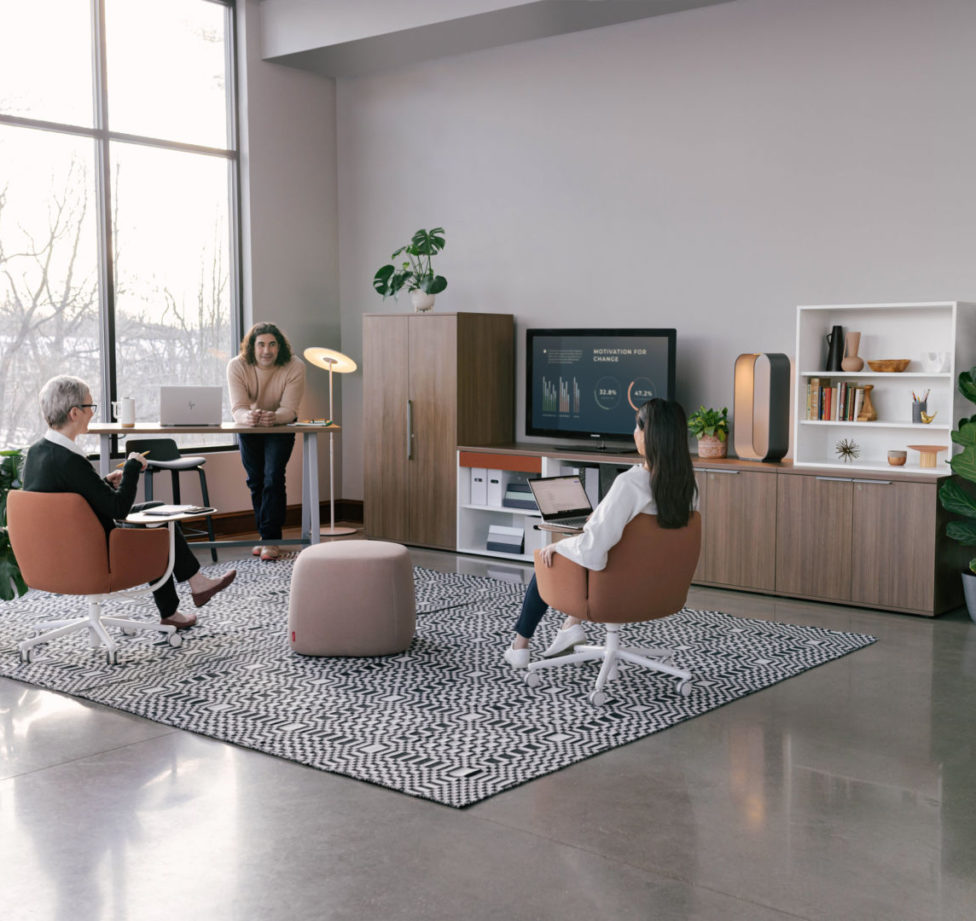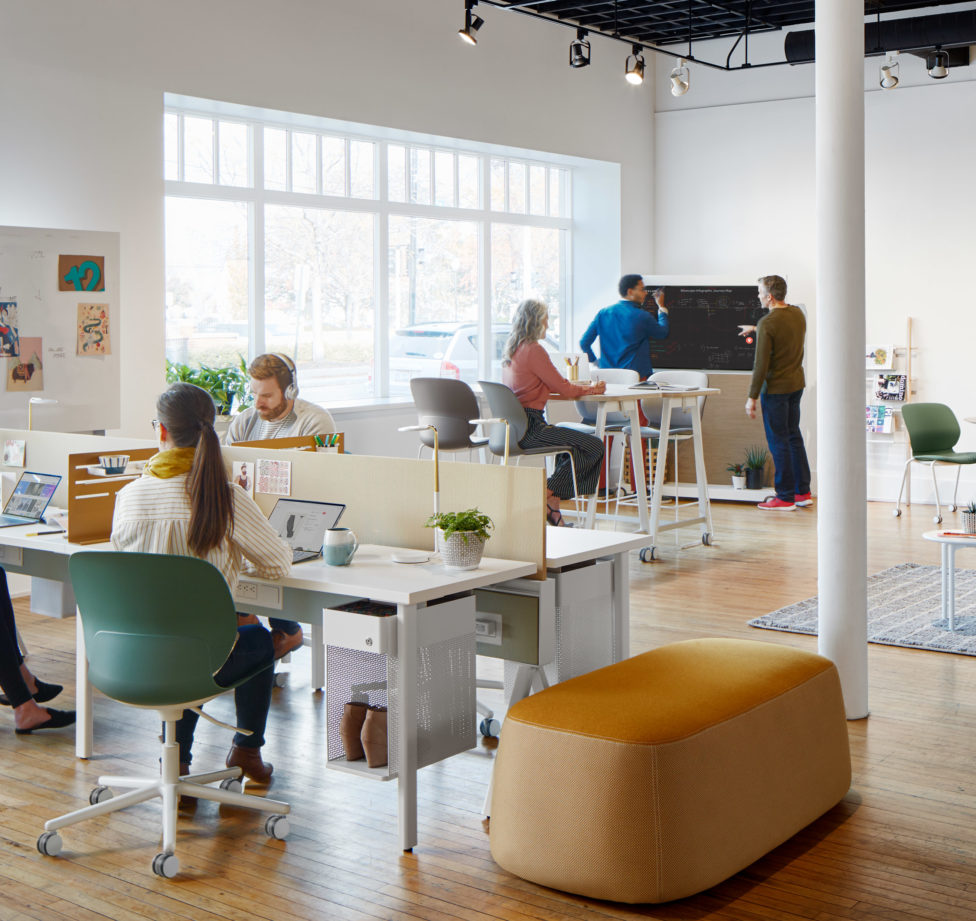
While often taken for granted, lighting plays an important role in how we feel each day. In fact, employers who harness the power of light in the workplace positively impact employee well-being. Here are 3 ways lighting affects well-being.
Personal Control of Lighting Enhances Work Performance When lighting is right, it is brilliant.
When lighting is wrong, there’s little else you can focus on. Lighting that is too bright, too dim, or creates unpleasant shadows can negatively impact employee productivity and well-being. Research shows that workers with the ability to control the lighting of their workspaces are better able to dedicate the effort necessary to efficiently handle difficult tasks. Plus, their work is often more accurate because they can focus on the task at hand, rather than losing focus in the moment due to eye strain from a lack of proper lighting, for example. Lighting that allows people to intuitively control brightness, dimness, and light position—something with an adjustable arm—will provide a positive experience for most employees. Control over personal workspace—including lighting—is empowering, leading to a happy and engaged workforce. And, bonus, optimal lighting options improve employee productivity by up to 20%.

Access to natural light in indoor and outdoor spaces has a significant impact on people physically and emotionally. Much has been written about natural light’s benefits to physical health—like its proven ability to provide energy, vitamin D production, and contribute to a regular sleep schedule. What is lesser known is that access to natural light has an impact on how valued employees feel at work. When employees have access to natural light in the workplace, they feel better. We do not fully understand how this connection works, but we do know that natural light improves mental health, helps lower stress, and lifts moods. No matter where you are in the world, bright sunlight can create glare on worksurfaces and technology that make it difficult to see and focus. Incorporating adjustable elements—like window blinds or a window tint and outdoor umbrellas—that shade and diffuse natural light is key.

Distractions from chatter and buzz frequently interfere with employees’ ability to concentrate. Part of the equation for happy, healthy, and productive workspaces involves using acoustic light fixtures to absorb, block, cover, and diffuse sound.
The activities for which a space is used, as well as background noises, determine what lighting solutions perform best for acoustic control. Scientific studies show that lighting applications are an effective way to manage acoustics, improve focus, and reduce stress.
Table, floor, and pendant lighting used in combination with natural light from windows and skylights creates a comforting space, enriches any atmosphere, and generates a distinct vibe that makes a workplace unique. Whether you are looking to support individual tasks or group interactions, lighting has the potential to enhance individual well-being and the overall experience of any workforce.
Source: Haworth, BuzziSpace